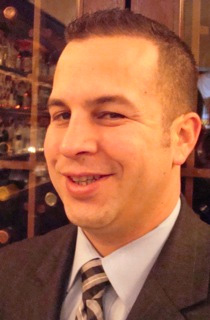

What’s one thing you wish people would be more open to?
I wish people would gravitate more toward sake, but that’s really hard. They just can’t get into it. For some pairings, sake just works, and sake is rarely ever bad for a dish. When you work with things like bonito, dishes that have a lot of umami, it can be fantastic. But we pour sake only once or twice a year. It’s always a very textual match, and the acidity is never clashing.
You note that wine sales have definitively increased this year. Where is that growth coming from?
We went to two somms on the floor, so it allows us more detailed time with each table, and allows us to find more fun and interesting things for them.
We’ve been hearing a lot about Champagne this year, and two Champagnes—Cédric Bouchard and Billecart-Salmon—made your top-ten list. Is that normal, or did you see an up tick in Champagne?
Our Champagne list is a strong part of our program. We offer four to five Champagnes by the glass, from small growers to big houses, plus ten or twelve half-bottles. Champagne is really one of my biggest passions.
How high-end have you been able to go for by-the-glass Champagne?
We’ve been pouring Krug for a long time. I changed that to the 2000 Billecart-Salmon Cuvée Nicolas-François, at $48 a glass.
What was the most exciting bottle of wine that you opened at Cyrus this year?
Probably a 1975 Pierre Peters Premier Cru. It had no carbonation left, but he’s one of my absolute favorite growers. Mesnil-sur-Oger didn’t have Grand Cru status yet in 1975. For me, that wine drinks like old Burgundy: oxidative but powerful, racy, great acidity, just a beautiful bottle of wine.
How did a German silvaner end up on your top ten list, the Hans Wirsching Franken Silvaner Grosses Gewächs Julius-Echter-Berg?
I think Hans Wirsching is one of the great wineries in the world, and that is just a magical bottle of wine. We pour a lot of Grosses Gewächs. It’s such a versatile wine with our food pairings because it’s so aromatic, but also has texture. I turn people onto that wine and people just freak out about it. You can take it all the way to the meat course.
Another wine that did well was the 1993 R. López de Heredia Viña Tondonia Blanco. Do you have to steer people toward that wine, or contextualize it for them?
When we pour that wine, we tell people about it: aged 19 years at the bodega, etc. We’ve probably gone through 9-12 cases of it. Normally with our pairings we offer a choice, but with that pairing we just do this one wine. It’s with the pan-roasted John Dory with yuzu kosho butter, charred romaine and dashi. There’s a smoky richness to the wine that connects with the dashi, and it’s fun for us because it’s a wine that people really are amazed by. Most people haven’t seen a white wine that’s 19 years old. And when they taste a wine that’s perfectly oxidative, they love it. But this is a wine where you can’t just pour it and walk away from the table.
A Jacques Puffeney Arbois also ended up on your top ten list. How are you turning people onto that?
It’s another pairing. We do it with the chestnut and Sherry soup. It’s another oxidized wine, which can even be perceived as a flaw sometimes for people who make wine. But clean oxidation is really mind-opening. As the wine opens up, it spans the whole nutty spectrum from almonds to walnuts and then chestnuts.
You seem to be really killing it with Madeira. Why is that, and when did that start?
When you get into Terrantez and Sercial, the drier styles, the exiting thing for me about Madeira is the ability to showcase it with savory pairings, like foie gras. And then the sweetness of a Malvasia really picks up on the caramelly quality of butterscotch in a dessert. The versatility they have is what makes those wines so much fun.
What’s one producer you added to the list this year that you’re particularly excited about?
Cédric Bouchard. Everything I taste from him blows me away. From his entry level Inflorescence label, which he sources from some vineyards that his father farms, all the way to his Roses de Jeanne wines. It’s the complete opposite of what we think Champagne is: it’s not a mix of grapes, not a multi-vintage, and it’s from the Côtes des Bar, which traditionally doesn’t have much of a reputation.
Longtime senior editor at Wine & Spirits magazine, Luke now works for the Stanford Technology Ventures Program.
















